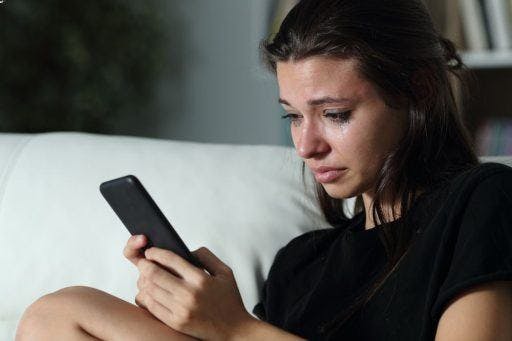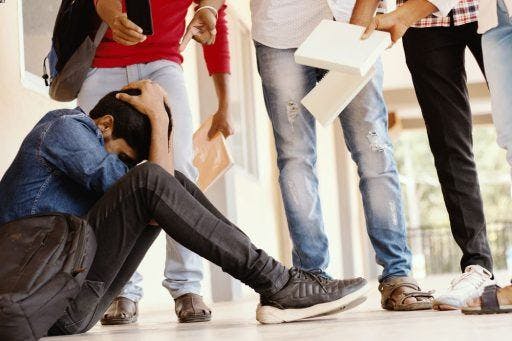Bullying is a social disease. And for many young people, it’s an unfortunate fixture of their day-to-day lives. According to a 2019 survey by Mission Australia, 1 in 5 teens aged 15-19 reported experiencing various types of bullying in a 12-month span. Numerous anti-bullying organisations warn that bullied individuals are more likely to develop low self-esteem, depression, and other mental health issues.
In StopBullying.gov, the US Department of Health and Human Services (HHS) defines bullying as “unwanted, aggressive behaviour […] that involves a real or perceived power imbalance. The behaviour is repeated, or has the potential to be repeated, over time.” It can include harmful actions like physical violence, verbal threats, and social exclusion.
There are many different types of bullying, but they all have a critical thing in common: they deal irreparable damage to the target. There’s a reason bullies in pop culture are rarely “the good guys.” You’re supposed to see their behaviour and know what not to do to others. Here, you’ll learn more about six types of bullying, with examples from TV and film.
1. Physical Bullying

Most people imagine this type when they hear the word “bullying.” It involves aggressive acts that injure another person, like hitting, kicking, and punching. Even the threat of violence falls under this category. Destruction of someone’s personal belongings is also a form of harm.
The sci-fi horror drama Stranger Things has several examples of physical bullying. In the first season, Steve and his crew ripped Jonathan’s photos up and broke his camera. Later, Steve got into a fistfight with Jonathan in an alleyway after saying derogatory things about his family. And in the fourth season, a group of popular teens from Eleven’s new school publicly taunted her in a roller rink before dousing her in a chocolate milkshake. This made her slip on her skates and fall to the floor, humiliated.
2. Verbal Bullying
This one is all about saying hurtful words to or about another person. Verbal bullying may also be in written form, as seen with the chaos-inducing “Burn Book” in the 2004 teen film Mean Girls. It usually works in tandem with other types, like physical bullying (as in the Stranger Things examples). It can manifest as teasing, name-calling, and lodging insults at someone.
The sitcom Black-ish tackled the topic in its first season. One of the main characters, Andre Jr., retaliated against a schoolmate who beat him up. But instead of resorting to physical violence, Andre tapped into his bully’s deepest insecurities and started insulting him nonstop. Initially, it empowered Andre to stand up for himself on his terms. But he later took it too far and realised he’d become the bully himself.
3. Social or Relational Bullying
In Mean Girls, Regina George was the archetypal high school bully. She was guilty of “personally victimising” most of her schoolmates, including former BFF Janis Ian. The two had a falling-out after Regina spread rumours about Janis’ sexuality. In the 2022 black comedy Do Revenge, Drea did the same to Eleanor in summer camp – a painful event that prompted the latter to exact vengeance years later.
These situations are examples of social bullying. It’s when someone tries to damage another person’s reputation, relationships, and sense of belonging. A bully might exclude their target from groups, peddle lies about them to make others avoid them, or publicly mock and shame them.
4. Cyberbullying

Not only does bullying happen in person and shared physical places, like at school or work, but it can also follow you into the digital space. That’s right: the rise of social media has made cyberbullying a phenomenon. In 2021, the Australia-based eSafety Commissioner shared that 44% of Australian youths reported having negative online experiences, including receiving threats and abuse.
Meanwhile, in South Korea, K-pop idols regularly face abusive comments from overly critical “anti-fans.” In extreme cases, these mean-spirited messages even escalate into full-blown death threats. Frequent targets of online hate include BLACKPINK’s Jennie and Mamamoo’s Hwasa. The 2021 K-drama Our Beloved Summer also featured a fictionalised version of an idol who struggled to cope with cyberbullying.
5. Sexual Harassment
Yes, sexual harassment is bullying, and it happens to students more often than people realise. One 2022 study published in the Journal of School Violence found that up to 42% of Australian adolescents reported experiencing sexual harassment in the previous school term.
Inappropriate behaviours include unwanted physical contact, lewd comments, and spreading gossip. Sexual harassment often occurs alongside other forms of bullying. The 2010 teen rom-com Easy A is a clear example. In it, protagonist Olive Penderghast was relentlessly slut-shamed and ostracised – all because her schoolmates believed she was sexually active.
6. Prejudicial Bullying

Bullying can often stem from holding prejudicial beliefs about someone different from you. These convictions are usually misguided and based on stereotypes. Still, a prejudiced person might resort to physical or verbal attacks, online abuse, and other types of bullying because they don’t think the other person deserves respect.
In Stranger Things, Lucas Sinclair’s bullies called him “Midnight” because of his dark skin. In the 2009 K-drama classic Boys Over Flowers, some wealthy classmates ridiculed lead Geum Jan-di for coming from a low-income family. And you can’t forget the trope of the conventionally attractive popular kids belittling the “freaks” with glasses, braces, and acne-ridden skin.
Bullies will look for every opportunity to pick someone apart and magnify their insecurities. While you can’t reason with the unreasonable, you can focus your energy on self-care to boost your confidence.
Make time for feel-good rituals like skincare, go to therapy, and work through frustrations with exercise. And if crooked teeth make you self-conscious, there’s always aligner therapy with ClearCorrect. Don’t worry! They’re a more discreet and comfortable alternative to traditional braces.
Are you experiencing one or more types of bullying? Remember that you don’t have to go through it alone. Find support by confiding in a loved one or authority figure you trust. And if you know someone who may be dealing with bullies, reach out and be there for them – you’re stronger together.
References:
Australia’s youth: Bullying and negative online experiences. (2021, June 25). Australian Institute of Health and Welfare.
Effects of bullying on mental health. (2019). StopBullying.gov.
Lei, X., Bussey, K., Hay, P., Mond, J., Trompeter, N., Lonergan, A., & Mitchison, D. (2019). Prevalence and correlates of sexual harassment in Australian adolescents. Journal of School Violence.



